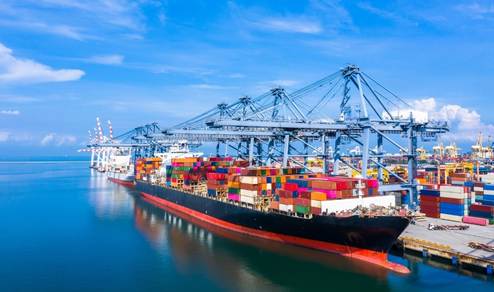
The article is taken from FCI In-Sight Newsletter May 2022, written by Thompson Lui, FCI Regional Manager SSEA.
It is May already, and I cannot say with certainty when my online orders will arrive. This is a repeat order that I had placed more than one month ago to the same supplier from China. This delay happened in 2020, when the seller replied that there was no availability, I then switched to source merchandise from the US. Same items, double the prices plus shipping costs for the reseller had buffer stock in the warehouse. These are non-essential items I ordered, but I feel discomfort, to say the least, compared to what has happened to the whole world that directly or indirectly depends on the smooth working of supply chains in China. At the time of writing, half of all expressways cargo trucks transport raw materials and goods are not accessible in PRC. Over 54 major cities are in total lockdown mode, including Shanghai.
To put things into a quantifiable perspective, Shanghai was ranked the largest port that handled the highest volume; 43.5 million TEU in 2020, to be exact, and seven out of the top ten largest ports in the world were in China 2020(1). Indeed, I am not the only one that understands how vital it is to the economy and businesses in China for normalcy to return, Jörg Wuttke, president of the European Union Chamber of Commerce, released a joint survey with Roland Berger as a partner that 23% (this percentage is the highest in a decade) of respondents (members in China) are now considering shifting current or planned investments out of China to other markets(2).
The most frequently asked question from business and manufacturing communities is: WHERE? Which country has the potential to become the next manufacturing hub of the world? India has emerged as the most sought-after manufacturing hub in the world, according to Cushman & Wakefield’s 2021 World Manufacturing Danger Index(3). The usual ingredients to attracting manufacturers are more than a handful, but market size, infrastructure, talents, demographics, and regulations go hand in hand with policies, and favourable environments are amongst the top contenders. India seems to play by the book laying out waves of such incentives to woo FDI lately. Nikkei Asia(4) reported that Indian Prime Minister Narendra Modi and his administration are rolling out a list of incentives to encourage chip makers to invest in India to complete their ecosystems in manufacturing mobile phones and automobiles. Among the top mobile device manufacturing brands globally recognized like Apple(5), Samsung and Xiaomi have already set up their factories or OEMs in India. Industry veterans and business acumen tell the same tale: follow your customers.
These mobile communication EMS are heavy-weight users of semiconductors (chips). We only mentioned one key component supplier; search online how many components are required to complete the assembly so a handheld device can power up. Will other key suppliers follow their customers and move into these SEZs (Special Economic Zones) where their financial service providers are invited to establish footprints in GIFT (Gujarat International Finance Tec-City) city(6), where RBI (Reserved Bank of India) has issued licenses to several service providers to facilitate solutions and platforms targeting domestic as well as international financial institutions (FIs). These FIs are called for to provide an array of financial products to cope with the surge in demand from manufacturers mentioned above in terms of the financial supply chain (SCF). Veterans can share with you the level of complexity these global names are accustomed to; these titans demand and insist on using only platforms (FCIreverse) that can provide transparency and consistency to their supply chains in both directions to ensure healthiness and sustainability. At the same time, their financial service providers (like members of FCI) can also be part. If you or your FI missed the wagons from North Asia in the 90s to 2010s, have you formulated strategies to catch this wave of opportunities?
